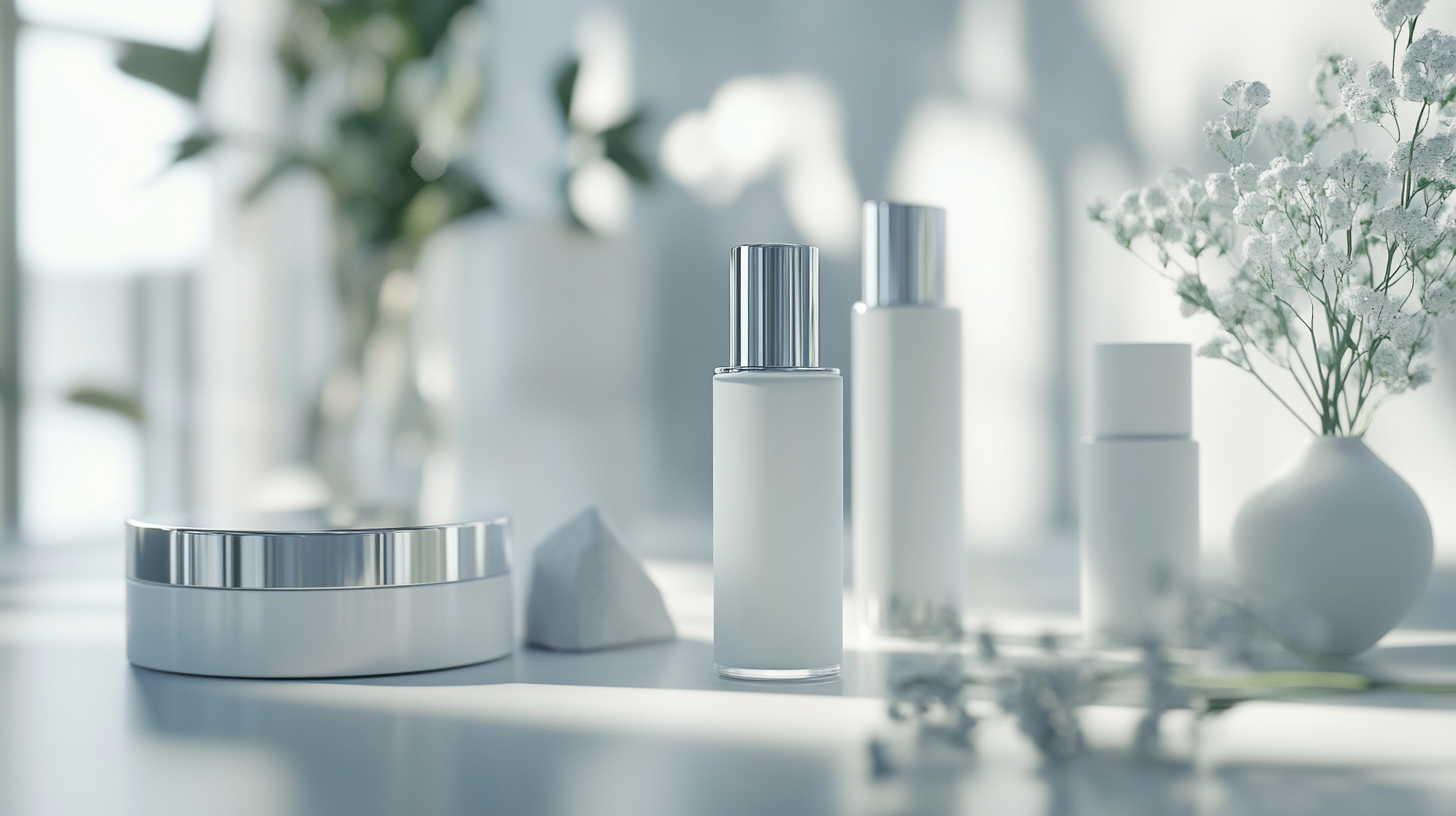
How to Choose the Best Skin Cosmetics for Your Global Sourcing Strategy
In today's global marketplace, the demand for high-quality skin cosmetics is at an all-time high. As consumers become increasingly discerning about the products they use on their skin, it’s essential for brands and retailers to navigate the complexities of sourcing effectively. With a multitude of options available internationally, choosing the right skin cosmetics not only involves understanding market trends but also ensuring that these products meet varied quality standards and regulations across the globe.
To build a successful global sourcing strategy, businesses must consider several critical factors when selecting their skin cosmetics. From ingredient sourcing to ethical manufacturing practices, each element can significantly impact brand reputation and customer satisfaction. This blog will guide you through the essential steps in choosing the best skin cosmetics for your sourcing strategy, equipping you with the insights needed to make informed decisions that resonate with today's savvy consumers.

Identifying Key Skin Cosmetic Trends in Global Markets
The global skin cosmetics market is witnessing a dynamic transformation, shaped by emerging trends that cater to evolving consumer preferences. Among these trends, the demand for evidence-based skincare is surging, with over 90% of survey respondents indicating a desire for products supported by scientific research. This shift signifies a growing consumer awareness regarding the efficacy and safety of skincare products, pushing brands toward transparency and innovation.
Moreover, the tattoo market, projected to grow significantly from $2.43 billion in 2025 to $4.83 billion by 2032, with a compound annual growth rate (CAGR) of 10.32%, highlights the increasing acceptance of body art as part of personal identity and beauty. This trend dovetails with a rise in protective and restorative skincare solutions tailored for tattooed skin, reflecting a broader consumer preference for multifunctional products that address specific skin concerns.
In addition, the expansion of the global dermatology equipment market, anticipated to reach $12.8 billion in 2024, underscores the importance of advanced treatment options in addressing skin issues. As consumers in developing countries increase their spending on skincare, there is a notable shift towards more advanced, evidence-based therapeutic products. This evolution in the skin cosmetics landscape requires brands to adopt thoughtful sourcing strategies that align with global trends, ensuring they meet the diverse needs of consumers worldwide.

Assessing Quality Standards and Certifications for Sourcing
When sourcing skin cosmetics on a global scale, understanding quality standards and certifications is paramount. Different regions have varying regulations that dictate what constitutes safe and effective cosmetic products. For instance, the European Union has stringent guidelines under the Cosmetics Regulation, which necessitates detailed ingredient labeling and safety assessments. On the other hand, the U.S. adheres to the Federal Food, Drug, and Cosmetic Act, placing the onus on manufacturers to ensure safety, but without pre-market approval for cosmetics. Familiarizing yourself with these frameworks can help streamline your sourcing process and ensure compliance.
Certifications play a crucial role in signalling quality and safety to consumers. International certifications, such as ISO 22716, focus on good manufacturing practices (GMP) for cosmetics, dictating how products should be produced, controlled, and tested. Brands with certifications like cruelty-free or organic also cater to the growing consumer demand for ethically sourced products. Assessing a supplier's certifications can provide assurance that their products meet established industry standards, thus bolstering your brand's credibility and appeal.
In today's interconnected market, leveraging quality standards and certifications is not just about compliance; it's about competitive advantage. By opting for suppliers who prioritize these factors, brands can enhance their product lines with high-quality cosmetics that resonate with consumers’ increasing expectations for transparency and responsibility. Adopting a diligent approach when evaluating these elements can set a solid foundation for a successful global sourcing strategy in the cosmetics sector.
Evaluating Ingredient Sourcing and Sustainability Practices
When selecting skin cosmetics for a global sourcing strategy, evaluating ingredient sourcing and sustainability practices is crucial. Consumers are increasingly aware of the environmental and ethical implications of their purchases, pushing brands to prioritize transparency and responsibility in their sourcing decisions. By focusing on sustainably sourced ingredients, companies not only enhance their brand reputation but also appeal to a conscientious consumer base.
One key aspect of ingredient sourcing is understanding the origins of the materials used in cosmetic products. Many popular ingredients, such as shea butter or argan oil, are derived from specific regions where local communities depend on harvesting these resources. By ensuring that these ingredients are sourced sustainably, brands can support local economies and empower communities while minimizing environmental impact. Moreover, opting for organic and ethically harvested ingredients can further strengthen a company’s sustainability narrative.
Sustainability practices extend beyond just the ingredients themselves. Brands should also consider the entire life cycle of their products, from production to packaging. Eco-friendly packaging solutions, such as recyclable or biodegradable materials, contribute significantly to reducing waste. Furthermore, companies can foster sustainable practices within their supply chains by collaborating with suppliers who prioritize environmental stewardship. This holistic approach not only aligns with today’s consumer values but also sets a strong foundation for long-term brand loyalty.
Understanding Cultural Preferences in Skin Cosmetic Products
In today’s global marketplace, understanding cultural preferences in skin cosmetic products is essential for developing a successful sourcing strategy. Different regions have distinct beauty standards and skincare practices that greatly influence consumer purchasing behaviors. For example, the rise of K-Beauty has reshaped perceptions of skincare with its multi-step routines and emphasis on ingredient efficacy. Products like brightening serums featuring concentrated forms of vitamin C are trending not only for their immediate results but also for their cultural significance in promoting luminous skin.
Moreover, inclusivity has become a key consideration in the development of cosmetic products. Brands are increasingly tapping into diverse consumer needs by employing culturally aware research and development strategies. For some, this means creating products tailored to various skin types and concerns prevalent in different demographics. For instance, the incorporation of amino acids and proteins in skincare formulations aligns with the growing consumer demand for effective, scientifically-backed solutions, appealing to customers' desire for personalized skincare regimens.
As global beauty cultures continue to intersect, marketers must remain agile and attentive to emerging trends. The growing preference for clean and natural skincare, alongside the innovation of sustainable ingredients, demonstrates consumers' values extending beyond superficial aesthetics to include ethical considerations. Navigating this complex landscape requires a keen understanding of cultural nuances and a commitment to inclusivity, ensuring that beauty products resonate with a diverse customer base while meeting their unique skincare needs.

Building Strategic Partnerships with Reliable Suppliers
Establishing strong strategic partnerships with reliable suppliers is paramount in the cosmetics industry, particularly when sourcing products globally. According to a report by Statista, the global cosmetics market is projected to reach over $800 billion by 2025, emphasizing the need for businesses to collaborate with suppliers who can adapt to rapidly changing consumer preferences and regulatory landscapes. Selecting suppliers that align with your brand values and quality standards can significantly impact product success in diverse markets.
A vital aspect of building these partnerships is conducting thorough due diligence. Research shows that over 60% of cosmetic recalls are attributed to ingredient safety issues and supplier reliability. Therefore, vetting suppliers for their compliance with industry regulations and quality certifications becomes essential. Collaborating with suppliers who have a proven track record not only ensures the integrity of your products, but also protects your brand reputation.
Furthermore, leveraging technology in supplier relationships can enhance transparency and efficiency. A recent McKinsey report highlighted that companies utilizing digital supply chain tools saw a 15% reduction in operational costs. Integrating platforms that track supplier performance and product quality in real time can foster stronger relationships and enable companies to make informed sourcing decisions. Ultimately, investing in reliable partnerships paves the way for innovation and sustainable growth in the competitive cosmetics market.
